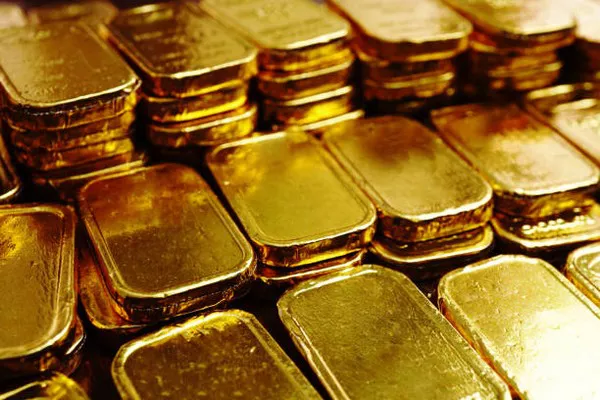Gold has captivated humanity for centuries with its beauty, rarity, and enduring value. Whether you have inherited a gold chain or purchased one yourself, it’s essential to verify its authenticity. With counterfeit gold becoming increasingly sophisticated, it is crucial to know how to differentiate genuine gold from imitations. In this comprehensive guide, we will explore various methods and techniques to help you determine if your gold chain is real.
Understanding Gold Purity
Before delving into the identification process, it’s important to grasp the concept of gold purity. Gold jewelry is typically not made of pure gold, as pure gold is too soft to be practical for everyday wear. Instead, it is often alloyed with other metals to increase its durability. The purity of gold is measured in karats (K) or fineness.
24K gold is considered pure gold, consisting of 99.9% gold content. However, it is rare to find jewelry made of 24K gold due to its softness. Most gold jewelry is available in 18K (75% gold), 14K (58.3% gold), or 10K (41.7% gold) variations, with the remaining percentage being comprised of other metals.
Inspecting Physical Characteristics
Visual examination of the physical characteristics of your gold chain can provide initial clues about its authenticity. Here are some key aspects to consider:
Color: Genuine gold maintains a distinct, warm yellow hue. However, it’s important to note that white gold has a silver or white appearance due to the presence of other metals, such as silver or palladium. Rose gold, on the other hand, has a reddish tone from the addition of copper. Be cautious if the chain appears unusually bright or has a different color entirely, as it may indicate a counterfeit.
Weight: Gold is a dense metal, so genuine gold chains tend to be heavier than their counterfeit counterparts. If your chain feels surprisingly lightweight, it may be a red flag.
Hallmarks: Legitimate gold jewelry often bears hallmarks or stamps indicating its purity and the manufacturer’s mark. Look for stamps such as “18K,” “14K,” or “10K” on a small tag or the clasp of the chain. Hallmarks may also include the manufacturer’s logo or country of origin. Keep in mind that some counterfeit pieces may also feature fake hallmarks, so further examination is necessary.
Conducting Acid Tests
Acid testing is a widely accepted method for determining the purity of gold. However, it is essential to exercise caution and follow safety protocols when conducting these tests. Here’s an overview of acid testing:
Acquire an acid test kit: Purchase a gold acid testing kit from a reputable jeweler or supplier. These kits typically include different acids for varying gold purity levels, along with a testing stone and instructions.
Select a testing area: Choose a discreet spot on your gold chain, preferably an inconspicuous part of the clasp or a link. Ensure the area is clean and free from any coatings or plating.
Scratch the testing area: Use a testing stone from the kit to create a small, visible scratch on the chosen spot. The scratch should be deep enough to expose the metal beneath the surface.
Apply acid: Use the provided dropper to apply a small amount of acid to the scratch on the testing stone. Start with the lowest concentration acid and observe the reaction.
Observe the reaction: Genuine gold will exhibit little to no reaction to the acid, while counterfeit gold or lower purity gold will react by discoloring or dissolving. Refer to the instructions in your testing kit for the specific reactions to expect based on the acid’s concentration and the gold’s purity.
It is important to note that acid testing can leave a small mark on the gold chain. Therefore, it is advisable to perform the test on an inconspicuous area or seek professional assistance if the chain holds sentimental or significant value.
Using Magnetism as a Test
Magnetism can be an additional tool to assess the authenticity of your gold chain. Follow these steps to perform a magnetism test:
Choose a strong magnet: Obtain a strong neodymium magnet, as weaker magnets may not yield accurate results.
Hold the magnet close: Hold the magnet near your gold chain, allowing it to get as close as possible without touching the chain.
Observe the reaction: Genuine gold is non-magnetic and will not be attracted to the magnet. If your gold chain is attracted to the magnet or exhibits any magnetic properties, it is likely made of a different metal or has a gold-plated surface.
Bear in mind that this test can only indicate the absence of magnetism, not the presence of genuine gold. Therefore, it should be utilized in conjunction with other examination methods.
Seeking Professional Assistance
If you are uncertain about the authenticity of your gold chain or prefer a more accurate assessment, it is advisable toconsult a professional jeweler or gemologist. These experts have the knowledge, experience, and specialized equipment to provide a comprehensive analysis of your gold chain. They can perform advanced tests, such as X-ray fluorescence analysis or specific gravity tests, which can accurately determine the gold content of your chain.
When seeking professional assistance, be sure to choose a reputable and certified jeweler or gemologist. Look for certifications from recognized organizations such as the Gemological Institute of America (GIA) or the American Gem Society (AGS). These professionals can not only confirm the authenticity of your gold chain but also offer insights into its value and provide any necessary documentation for insurance purposes.
Conclusion
Determining the authenticity of a gold chain is essential to ensure your investment and prevent falling victim to counterfeit jewelry. By examining the physical characteristics, conducting acid tests, and using magnetism as a test, you can gather valuable information about the authenticity of your gold chain. Remember, seeking professional assistance is always a reliable option when in doubt or dealing with valuable or sentimental pieces. With these tools and knowledge at your disposal, you can confidently assess the authenticity of your gold chain and appreciate its true value.


